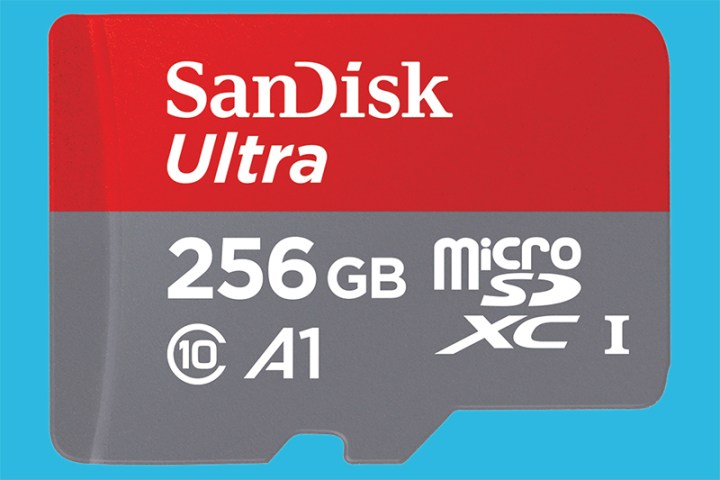
The 256GB card, designed for expanding smartphone storage as well as use with action cameras and other small cameras, bumps the transfer speed up to 95MB per second. That speed makes it possible to run apps directly off the MicroSD without serious lag times, making it possible to expand the available space on any smartphone with an SD card slot beyond just moving photos and music there.
That new A1 category means the card handles an input-output access per second (IOPS) of 1,500 and write files at a third of that speed. SanDisk explains that the enhanced speed allows apps to open quickly, even using programs that filled with high-resolution graphics and audio files.
“SD technology is trusted by consumers around the world for its reliable, backwards compatible and highly interoperable storage, making it the world’s leading memory format with billions of SD memory cards and devices in the market,” said Brian Kumagai, the president of the SD Association that set the requirements for the new A1 standard. “The A1 specification will help consumers identify the appropriate card to ensure an optimal experience when running and launching apps on their smartphone. We are pleased that SanDisk will release an A1 card, and continues to contribute to breakthrough technologies enabled by the microSD format.”
While the premium speed is designed to expand smartphone capacity, the card can also transfer 1200 photos with a 3.5MB size in a single minute, SanDisk says. The card’s 256GB capacity will also store up to 24 hours of HD video.
Like SanDisk’s other high-end cards, it is designed to be waterproof, temperature-proof and shockproof, as well as handling X-rays when going through airport security.
The SD card is also compatible with SanDisk’s Android app, Memory Zone, a platform for backing up files.
The premium speed and capacity on the new card comes at a cost — SanDisk will sell the new MicroSD card in January for $200.
Editors' Recommendations
- Does the Samsung Galaxy Z Flip 4 have an SD card slot? How the phone handles expandable storage
- How to move apps to an SD card in Android
- SanDisk’s $450 microSD card adds 1TB more storage to your Surface Pro




